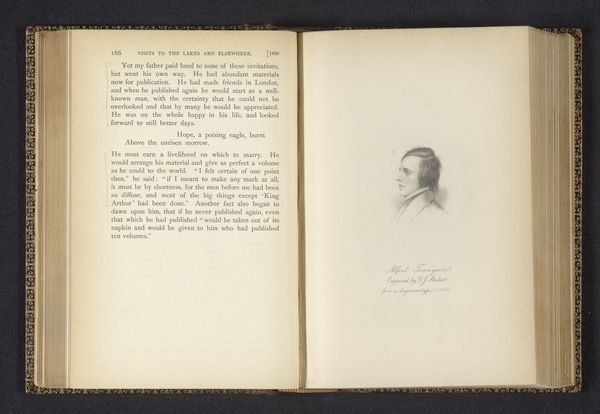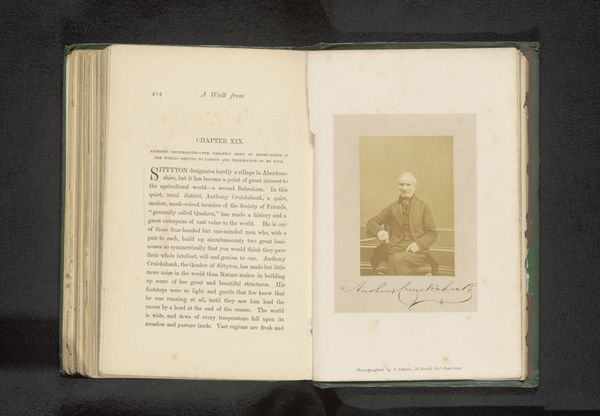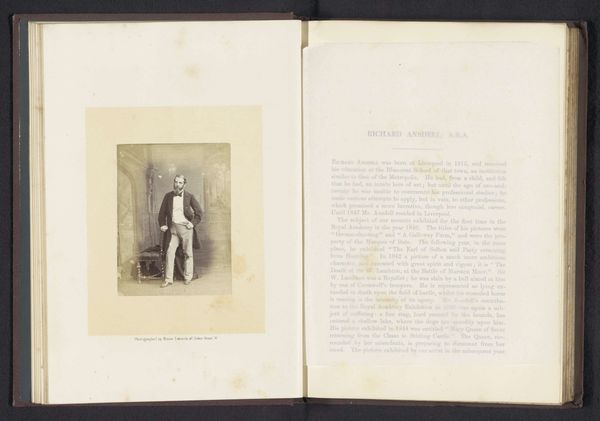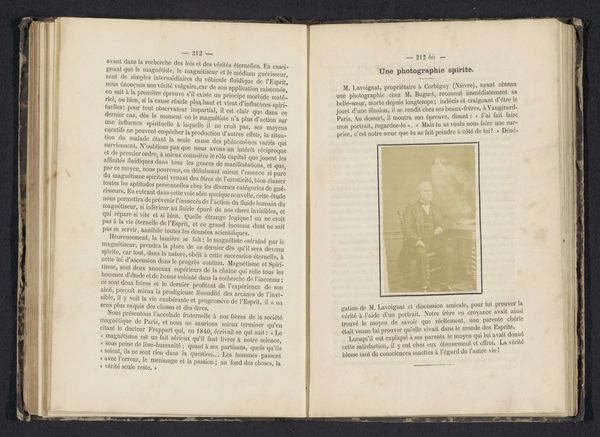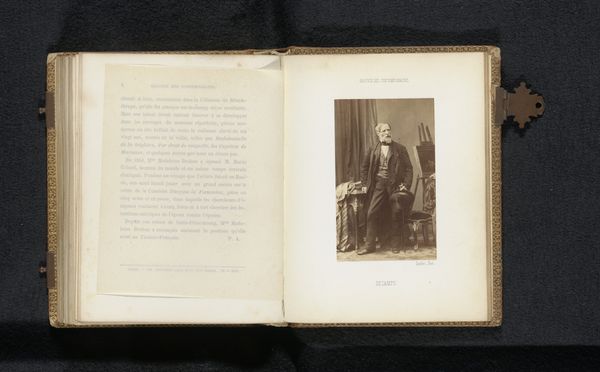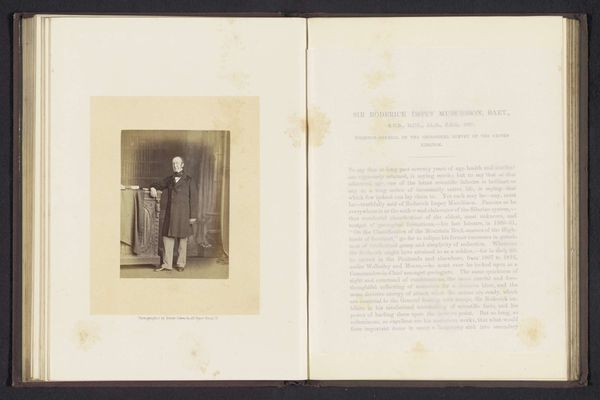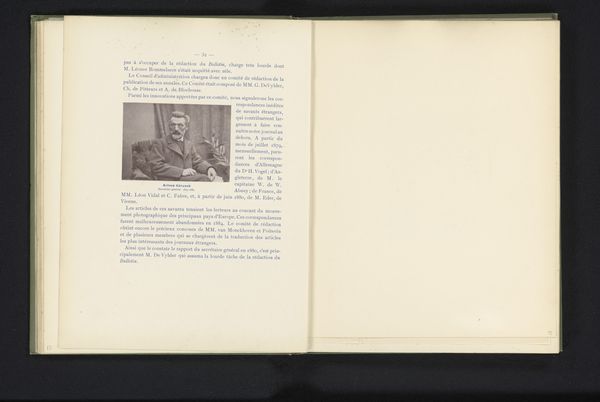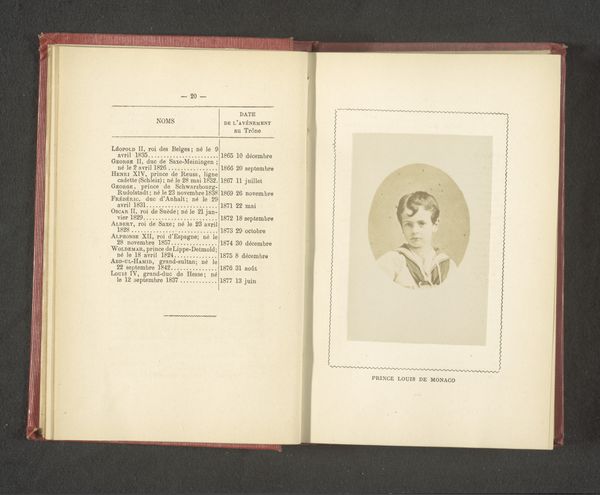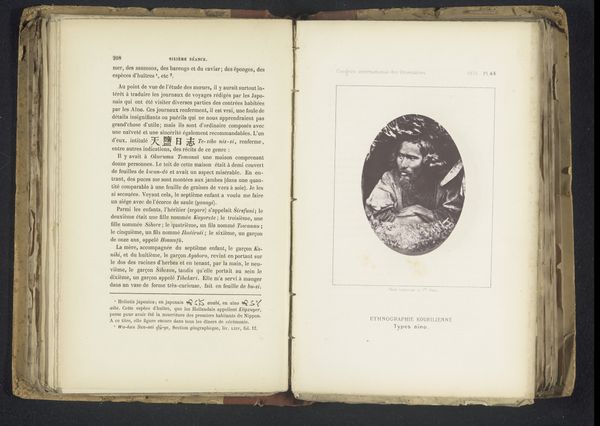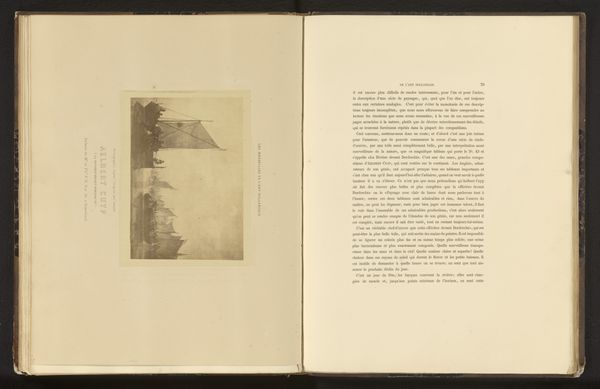
print, paper, photography
#
portrait
#
aged paper
#
homemade paper
#
paper non-digital material
#
paperlike
# print
#
book
#
paper texture
#
paper
#
photography
#
personal sketchbook
#
fading type
#
stylized text
#
thick font
#
historical font
Dimensions: height 90 mm, width 56 mm
Copyright: Rijks Museum: Open Domain
Curator: Here we have a page from a book containing what appears to be a portrait titled "Portret van Henry J. Rey", made before 1868. Editor: My immediate impression is of something incredibly fragile. The paper looks thin and aged, and the image itself seems to be fading. It creates a real sense of history and passing time. Curator: The image, a print of some kind, is set within the very aged paper stock, suggesting the artist, Alphonse Lonnia, saw the paper itself as part of the composition. It almost feels like we're viewing a relic. Editor: Exactly! The raw materiality screams out at me. Look at the homemade quality of the paper, the thick, almost stylized text surrounding the portrait. It points to a hand-crafted production. What does this context surrounding its creation communicate? Curator: The text's presence directs our attention to the function of the portrait within the broader context of the book. It becomes about memorialization. The faded, aged quality underscores how memory itself fades and changes. Editor: It makes you wonder about the social context, the networks of labor and production involved in creating not just the image but the entire book. Consider also the audience for such a volume and the cultural value it placed on portraiture and remembrance. Curator: Agreed. Even just the typography, the historical font, evokes a specific era, drawing us into its aesthetic conventions. It gives a framework to consider the artistic conventions being adopted. Editor: Seeing the materials, like the aged paper, is significant to consider. How does it speak about our throwaway consumer culture when we observe a piece like this with value placed on what survives? Curator: Seeing the formal portrait, framed by textual tributes printed on paper now showing its age, is a powerful reminder of how intertwined personal history and broader cultural memory are. Editor: For me, the impact rests with understanding the whole. The combination of paper, print, the deliberate placement of image and text; how labor intersects with this image and this history offers something truly rich.
Comments
No comments
Be the first to comment and join the conversation on the ultimate creative platform.
